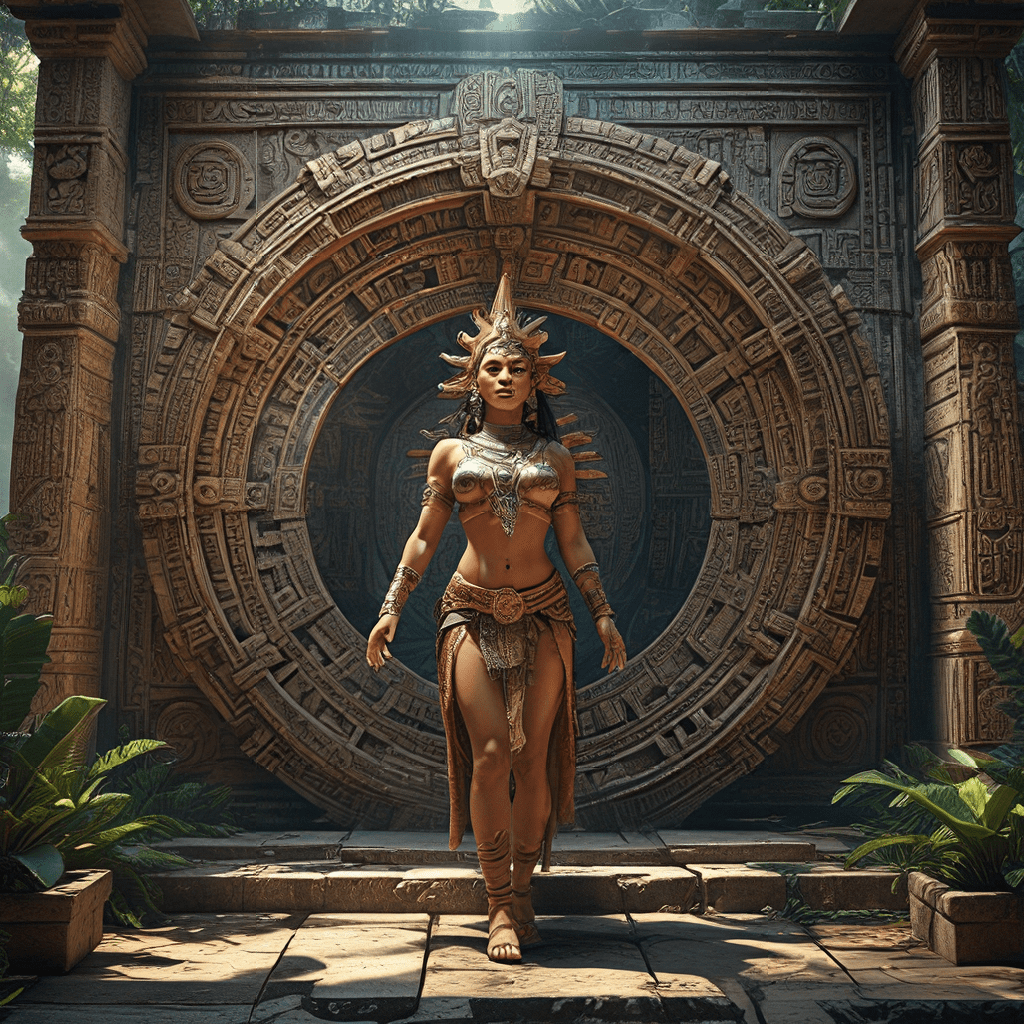Mayan Mythology and the Power of Sacred Geometry
1. Introduction
The ancient Maya civilization of Central America flourished for centuries, leaving behind a rich legacy of cultural and scientific achievements. Among their most fascinating contributions is their intricate mythology, deeply intertwined with the concept of sacred geometry. This article delves into the profound connection between Mayan mythology and the power of sacred geometry, exploring its significance in their worldview and its enduring influence on modern society.
2. The Creation Myth and the Importance of Numbers
The Mayan creation myth, known as the Popol Vuh, describes the emergence of the world from a primordial sea. This myth highlights the importance of numbers, specifically 13, 20, and 9, which are deeply ingrained in Mayan cosmology. These numbers are reflected in geometric patterns throughout Mayan art and architecture, representing the cyclical nature of time and the interconnectedness of all things.
3. The Mayan Calendar and Sacred Geometry
The intricate Mayan calendar, known as the Long Count, is a testament to their profound understanding of time and astronomy. This calendar is based on a 260-day cycle, represented by a sacred geometric pattern known as the Tzolkin. The Tzolkin is composed of 20 glyphs, each associated with a specific deity or natural element, further demonstrating the Maya's belief in the interconnectedness of the physical and spiritual realms.
4. Mayan Architecture and Sacred Geometry
Nowhere is the connection between Mayan mythology and sacred geometry more evident than in their magnificent architecture. The pyramids, temples, and plazas of Mayan cities are meticulously designed according to geometric principles, reflecting their profound understanding of the cosmos. The pyramid of Chichen Itza, for example, embodies the Mayan calendar with its four sides representing the four cardinal directions and 365 steps symbolizing the solar year.
5. The Symbolism of Specific Geometric Shapes
The Mayans attributed specific meanings to various geometric shapes, each representing different aspects of their worldview. The circle symbolized unity and infinity, while the square represented stability and the four cardinal directions. The triangle held significance for its association with the three realms of existence: the underworld, the earth, and the heavens. Spirals, found in numerous Mayan carvings, represented the cyclical nature of life and the journey of the soul.
6. The Importance of Sacred Geometry in Rituals and Ceremonies
Sacred geometry played a crucial role in Mayan rituals and ceremonies. Geometric patterns were believed to create sacred spaces that facilitated communication with the divine and access to higher realms of consciousness. These patterns were incorporated into altars, offerings, and ritual dances, serving as visual representations of the Mayan cosmology and their connection to the cosmos.
7. Theories on the Power of Sacred Geometry
Various theories have been proposed to explain the power of sacred geometry in Mayan culture. Some believe that geometric patterns resonate with specific frequencies that can alter human consciousness and perception. Others suggest that these patterns act as symbolic representations of universal principles, allowing individuals to tap into a deeper understanding of the universe.
8. Modern Applications of Mayan Sacred Geometry
The principles of Mayan sacred geometry are finding renewed interest in modern architecture, art, and design. Architects are incorporating geometric patterns into buildings to create harmonious and uplifting spaces, while artists are using these patterns to explore the intersection of art and spirituality. The application of sacred geometry in modern life reflects a growing appreciation for the interconnectedness of all things and the potential of these ancient principles to enhance human well-being.
9. The Enduring Legacy
The legacy of Mayan sacred geometry continues to inspire and fascinate people worldwide. The intricate patterns and profound symbolism embedded in Mayan architecture, art, and mythology offer valuable insights into their understanding of the universe and their profound connection to the cosmos. As we continue to explore the power of sacred geometry, we gain a deeper appreciation for the enduring wisdom of the ancient Maya and their profound contribution to human knowledge.
10. Frequently Asked Questions (FAQs)
What is sacred geometry?
Sacred geometry refers to the use of geometric patterns and shapes that hold symbolic and spiritual significance in various cultures and traditions. These patterns are believed to represent universal principles, connect with higher realms of consciousness, and create harmonious environments.
What is the significance of sacred geometry in Mayan mythology?
The Mayans believed that sacred geometry was integral to understanding the cosmos and connecting with the divine. Geometric patterns were incorporated into their architecture, art, rituals, and ceremonies, reflecting their profound understanding of the interconnectedness of all things.
How does sacred geometry impact human consciousness?
Some theories suggest that geometric patterns can resonate with specific frequencies that alter human perception and consciousness. Others believe that these patterns act as symbolic representations of universal principles, allowing individuals to access deeper levels of understanding and awareness.
What are modern applications of Mayan sacred geometry?
The principles of Mayan sacred geometry are being applied in modern architecture, art, and design to create harmonious and uplifting spaces, explore the intersection of art and spirituality, and promote a deeper understanding of the interconnectedness of all things.



